Why The Honda Civic and Mazda3 Are The Top Compact Sedans for 2015





 Email to a friend
Permalink
Email to a friend
Permalink
Tuesday, December 30, 2014
Brad Boyer, GoLocalPDX Auto Expert

2015 Honda Civic Sedan
There can be a comparison made with the top compact sedan vehicles offered today to the NBA’s Portland Trailblazers and the San Antonio Spurs. One has been dominate in the marketplace for years and has been the gold standard for quality.
It has tweaked the general set up but for the most part relied on what originally made it the leader. The other has been around a while but has only come in to its own the last couple of years. It completely re tooled and hit long sought after heights last year and is even better this year. The Honda Civic Sedan has been the class of the field in the compact sedan market for years. It hasn’t been flashy but has always been known for high quality and dependability.
With a complete redesign in 2014, the Mazda3 won numerous awards and won over critics and consumers alike. Just as Charles Barkley recently declared the Blazers as the best team in the West, the Mazda3 is considered the new front runner in this segment.
Honda Civic Sedan
The Civic, which has been around for over 40 years, has undergone some recent changes inside and out to keep up with the rapidly changing and competitive market.
In 2012, the overhaul was met with deserved criticism. Unlike Honda’s past, it heard the marketplace and quickly made some changes and in 2013 offered a much better product. A couple of the changes were a softening of the interior and more attractive and aggressive styling.
Even with the misstep in 2012, the Honda buyer didn’t dislike it as much as the critics. Honda’s reputation for quality rather than its sexiness is still one of the most important reasons consumers choose a Honda. The 2015 will not disappoint on that level, and the Accord looking exterior is quite attractive.
Besides quality, safety has always been the Civic's best selling points. The Insurance Institute for Safety (IIHS) named the 2015 Civic as a Top Safety Pick. Some critical standard safety features include lane departure, front collision warning systems and a rearview camera.
A number of manufactures have gone to a CVT (continuously variable transmission) for better fuel economy. Honda did this last year, getting rid of its clunky and old five-speed automatic transmission. Some consumers find the CVT can be a bit notchy but the Honda’s was smooth and almost unnoticeable. The 140 horsepower engine with the CVT generates a combined highway/city rating of 33 mpg. An even more impressive mileage winner is the hybrid version of the Civic. While one of the most expensive in the lineup, this Civic delivers 45 mpg.
Inside, besides the refined seats and dash system, the Civic comes standard with Bluetooth pairing, power windows and locks, and offers a text reading system too. The instrument and audio system is a bit clunky and requires a couple steps to get to where you want to be rather than a more intuitive set up. Also, while the front seats are very comfortable and roomy, the rear seating area is a little cramped for adults. Overall, the Civic provides exactly what the Honda buyer demands and even adds a little style to the mix. MSRP on the Civic is from $18,490 to $26,740.

Mazda3
Mazda3
The Mazda3 hit the market last year with a big splash. It won numerous awards as either car of the year or compact car of the year. And for good reason as the Mazda is a very fun to drive, efficient and smooth as well as very stylish. The most noticeable difference when comparing the Mazda3 to the Civic is the standard engine that is offered. While Honda’s base offering is the 140 horsepower/22 city and 41 highway mpg, the Mazda3 SkyActive 4 cylinder engine provides 155 horsepower and gets 29 city and 41 highway mpg. The 3 also generates more torque and road feel making it a much more engaging car for the driver. Mazda offers another engine option which is a 2.5 liter and generates 184 horsepower. Both are class leading performers.
Mazda’s designers have a philosophy for the looks of their cars. It’s called “soul of motion” design and was initially seen on the CX-5 along with the Mazda6. It has a sleek look with crisp lines without being choppy. It has the appearance more of a sports car than a compact sedan. The interior is also very plush and the driver will have the feel of being in a much more expensive vehicle.
In government crash tests, the Mazda3 earned 5 out of 5 stars for overall safety including front and side crash protection. The IIHS also gave the Mazda 3 its top “Good” rating. Standard safety equipment includes antilock disc brakes, traction control as well as front and side airbags. The rearview camera and blind-spot monitoring system alerts come standard on all models (other than the SV and Sport). An optional tech package is available and includes a lane departure warning system, forward collision warning and Mazda's Smart City Brake Support, which is a collision-mitigation system that can automatically brake the car to a stop at low speeds if the driver doesn’t react to a possible collision.
Refined for the 3 is the Mazda Connect infotainment system. A large, touch screen pop up display sits in the line of site for the drive on top of the dash. It may initially seem intrusive but after a short time in the vehicle, it becomes extremely easy to use and valuable for drivers to keep eyes on the road. The multiple steps to change radio stations or other settings became very annoying and not as easy to use as other systems.
Pricing for the Mazda3 ranges from $16,945 to $25,995.
Brad Boyer is owner of Carcierge, a car concierge company providing expert assistance on anything car-related. He also co-hosts Test Miles on 101.1 FM KXL on Sundays, and is a founding member of the Northwest Auto Press Association. You can email him your car-related questions at [email protected].
Related Slideshow: The 10 Worst Vehicles in the Last 30 Years
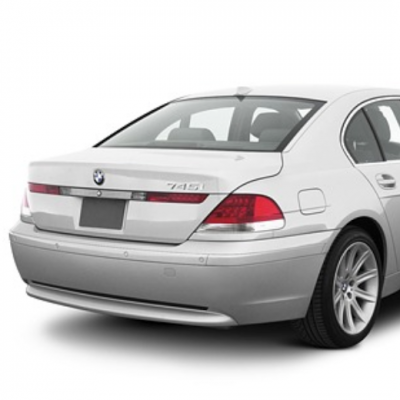
Prev
Next
#10
2002 BMW 7-Series
We have all become used to all the high-tech gadgetry in today’s vehicles and even the computer mouse type designs to control the gauges, BMW was ahead of the curve on its I Drive system it introduced in their flagship 7 series. Maybe even a little over its skis too as it required a two-day training session for the public relations staff that handed out the cars to the media just to understand the complexities.
Owners complained vigorously about how difficult it was to use and eventually just tried to avoid it altogether. The 2002 was also a huge overhaul in the exterior styling as well. When the tarp was taken off the new 7 the front and side view was astonishingly beautiful. The rear view…? Well, let’s just say Kim Kardashian would have been jealous. It wasn’t at all what the BMW buyer wanted.

Prev
Next
#9
Subaru Baja
This vehicle has been making an ironic sort of comeback in popularity. It’s really so impractical and ugly that it now has a great kitsch following. The Baja really didn’t know what it wanted to be. It wasn’t really a sedan and wasn’t really a pickup. Instead of offering the best of both worlds it offered less of both.
There was no middle seat in the back to make room for the rear section to fold forward. The problem there too was that only a portion of it folded forward. It was a nice little truck to drive but it was really a truck with a tiny bed that couldn’t really haul anything.
Photo via Wikimedia Commons
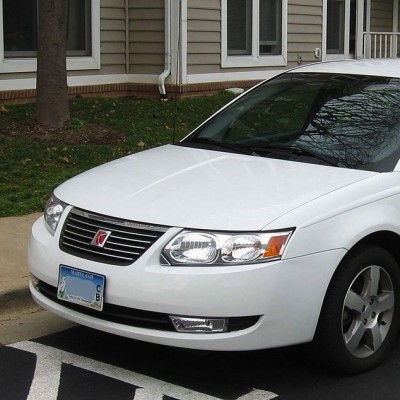
Prev
Next
#8
Saturn Ion
This was one sad little car. The quality was terrible - it was horrible to drive with no road feel, power or handling. The interior was badly laid out and all the plastic pieces made it feel like a hot wheels car (without the cool track).
The Ion was manufactured by General Motors between 2003 and 2007. In February of 2014 it was on the list of GM vehicles recalled because of faulty ignition switches. In 2004 after being saddled with and unexpected long term loan of the 2003 Saturn Ion, Car and Drive Magazine wrote of its experience, “Anxious to drive Saturn's all-new little guy, we were soon anxious to get rid of it. Not one editor could say he or she liked the car, which, according to our road test, had a ‘pigheaded transmission, anxious steering, bar-stool seating, muddled styling, [and a] cyclopean dash.’ The acceleration numbers didn't make it any more popular.”
Photo via Wikimedia Commons
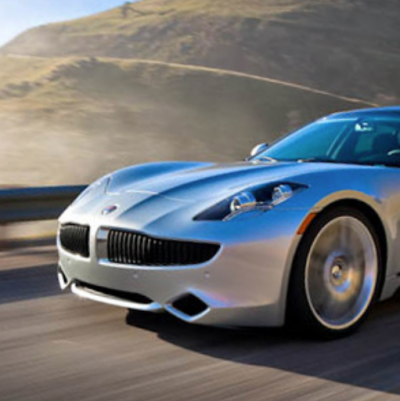
Prev
Next
#7
Fisker Karma
This may seem an odd choice to be on a worst list as it is stunningly beautiful but as Donald Sutherland’s character uttered in the movie The Dirty Dozen when looking at the troops, "Very pretty, General. Very pretty. But, can they fight?" That’s what it felt like driving the Fisker and the answer was no.
It was the brainchild of the Henrick Fisker who was responsible for designing the BMW Z8 and served as design director for Aston Martin. The first car to be produced by Fisker Automotive was the Fisker Karma, a hybrid luxury car which debuted in January 2008 at the North American International Auto Show with great fanfare. It was supposed to hit the market in 2009 but that date was missed. The Fisker Karma production was launched in November 2011.
What really gets the Karma on the list is the huge over-promise, under-delivery element. Fisker was given access to $529 million by the Department of Energy as part of the green initiative. It was going to be the Tesla beater but while Tesla has already paid back it’s loan, Fisker declared bankruptcy in 2013 with only 2,450 units built and $193 million of the DOE loan gone. Fisker Automotive was acquired by China's largest auto parts company, and plans to restart production of its Karma. It will also complete the half-finished development of a second model, according to a senior executive.
Photo via Wikimedia Commons

Prev
Next
#6
Cadillac Allanté
This widely expensive Cadillac roadster was heavy, unwieldy and had a convertible top that required two people to take it off and store in the back. It was GM’s attempt to compete with the European two-seater sports cars like the SL500. In a word, Fail. GM had the bodies made by Pininfarina in Italy and then finished up the rest of the production in Detroit.
The Allanté was manufactured from 1986 until 1993, with roughly 21,000 units built over a seven-year production run.
Photo via Wikimedia Commons

Prev
Next
#5
Chrysler TC by Maserati
Not to be outdone by GM, Chrysler decided to get in on the European styling by offering either a bad Chrylser or a very bad Masertai. It was hard to determine which manufacturer looked worse. Chrysler's TC by Maserati was based on a modified second generation Chrysler K car and introduced at the 1986 Los Angeles Auto Show.
After two years of development delays, the TC became available in late-1989 and 7,300 units were manufactured by the time production ended in 1990. All cars sold as 1991 models were actually manufactured in 1990. Lee Iacocca, who did a lot of good things at Chrysler and sold a lot of books, was a proponent of the new model "to change the way the world looked at Chrysler" and to create a new image for the automaker.
The problem was it reminded people more of a Chrysler Lebaron which was much less expensive than a Maserati.
Photo via Wikimedia Commons
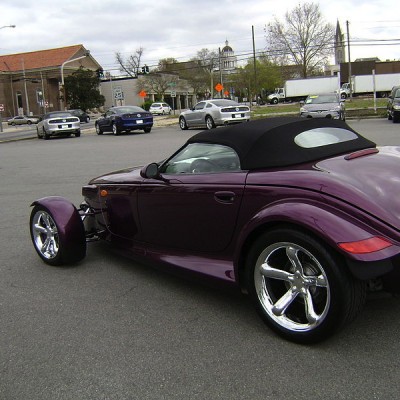
Prev
Next
#4
Plymoth Prowler
Chrysler, in the mid 90’s thought what every older driver wanted was to remember the 50’s hot rods, so it came out with its super cool, hot-rod-looking Plymoth Prowler. It was a real retro looking roadster with the open wheel front end and the big rounded rear fenders.
The designers were said to have been given free rein to develop whatever hot rod, sports car they could create. The Plymouth Prowler was produced for the 1997 and 1999-2001 model years. After the Plymouth name was discontinued in 2001 the Prowler was sold as a Chrysler Prowler for the 2001 and 2002 model years.
Besides the complete lack of vision out of the car, the worst feature was that it was all hat and no horse…as in horsepower. It looked as if it was like the hot rods of old but was “under” powered with a standard 3.5 liter, V-6 engine producing a paltry 250 horsepower.
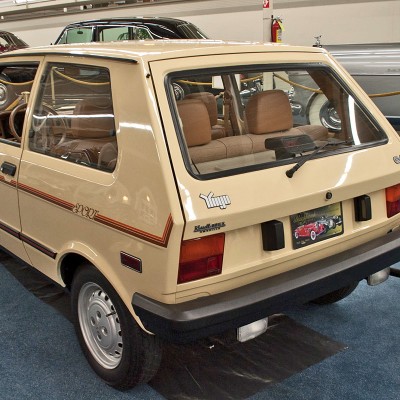
Prev
Next
#3
Yugo
Just the word conjures up the USA pride in the fact that, while maybe we built some crummy cars over the years, at least we weren’t responsible for this little high maintenance proletariat transportation device.
In 1985, Malcom Bricklin began importing the Yugo GV to the United States. Spending any seat time in this vehicle was scary to say the least. Built in Soviet-Bloc Yugoslovia, it made its U.S. debut at the 1984 Los Angeles Auto Show. At time it looked is if the little hatchback offered buyers some value with a 55-hp engine that was capable of 30-mpg fuel ratings and a 110-mph top speed for just $3990.
But the old saying was never truer than with the Yugo, you really do get what you pay for. Most car companies take a less dramatic way to end production than the Yugo that was built at the Zastava's Kragujevac factory. The factory that was suspected of making weapons and military vehicles was bombed by NATO forces during a Kosovo air-raid. That was mercifully the end of its car-manufacturing days.
Photo via Wikimedia Commons
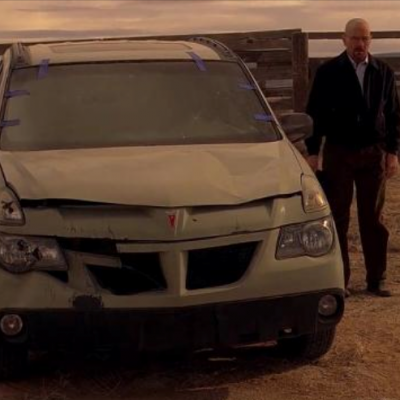
Prev
Next
#2
Pontiac Aztec
It was a tough call which GM vehicle would get the number one slot but the horror that was this ugly SUV seemed to be generated by multiple layers of incompetence rather than the complete disregard for the consumer as our number one choice.
Like the Baja, the Aztec has taken on a new cult status with one of television’s greatest characters driving it. But even Walter White from Breaking Bad and his bad ass fedora could not save the Aztec from being a hideous vehicle. It was something of a crossover vehicle but did neither well and its plastic exterior made it the butt of many a joke and conversation.
It’s likely that when Pontiac marketing reps determined giving one away to the first Survivor winner they thought of all the great press they would get. However, following the finale of the show, Howard Stern went on the air the next day and talked about what an ugly vehicle it was and that even if they gave him one, he wouldn’t take it. GM forecast sales of up to 75,000 Azteks per year, and needed to produce 30,000 annually to break even. Just 27,322 were sold in 2001. The Pontiac Aztek was sold from 2001 to 2005.

Prev
Next
#1
Cadillac Cimarron
It used to be, General Motors buyers would work their way up the GM family of cars and when they really “made it”, they bought a Cadillac. The emblem on the front of the car meant more than just designating what brand the car was but showed off what the driver had achieved in his or her lifetime.
In the mid 80’s the GM bean counters had such disregard for their customers and the brand significance they put out the Cadillac Cimarron. The Cimarron was simply a rebranded version of GM’s entry-level product of the time, the Chevrolet Cavalier. The fake Cadillac didn't exhibit any traditional Cadillac styling features and other than Cadillac badges, was virtually identical to the Cavalier. Both the Cimarron and Cavalier were built on the same assembly plant in South Gate, California and Janesville, Wisconsin.
It was first introduced in 1981 for the 1982 model year, and sold through 1988. During its seven-year model run, 132,499 were built and those responsible should make a pilgrimage to each household and apologize. It’s hard to say what the biggest problem was with the car itself. The meager 2.0 liter 4 cylinder engine with just 88 horsepower (in a Cadillac!) didn’t help. The worst was likely the arrogant price tag of twice that of the Cavalier with the Cadillac version selling for $12,000.
Related Articles
Enjoy this post? Share it with others.





 Email to a friend
Permalink
Email to a friend
Permalink


























 Delivered Free Every
Delivered Free Every
Follow us on Pinterest Google + Facebook Twitter See It Read It